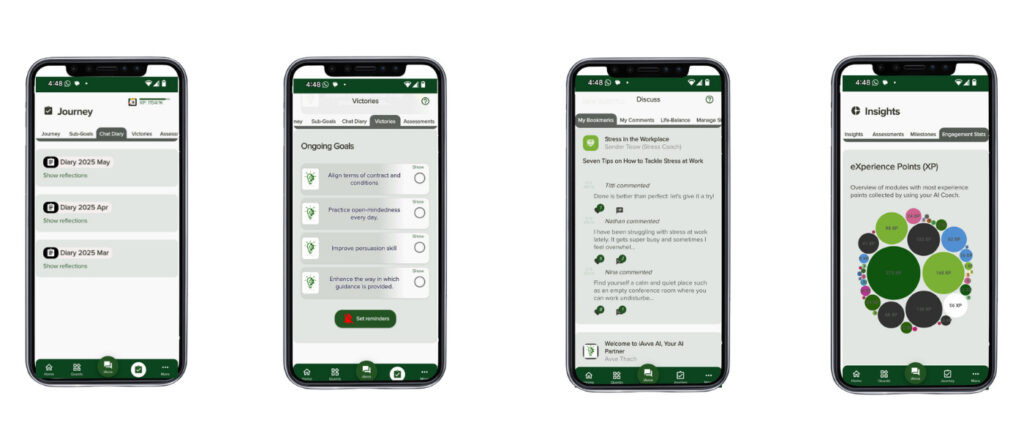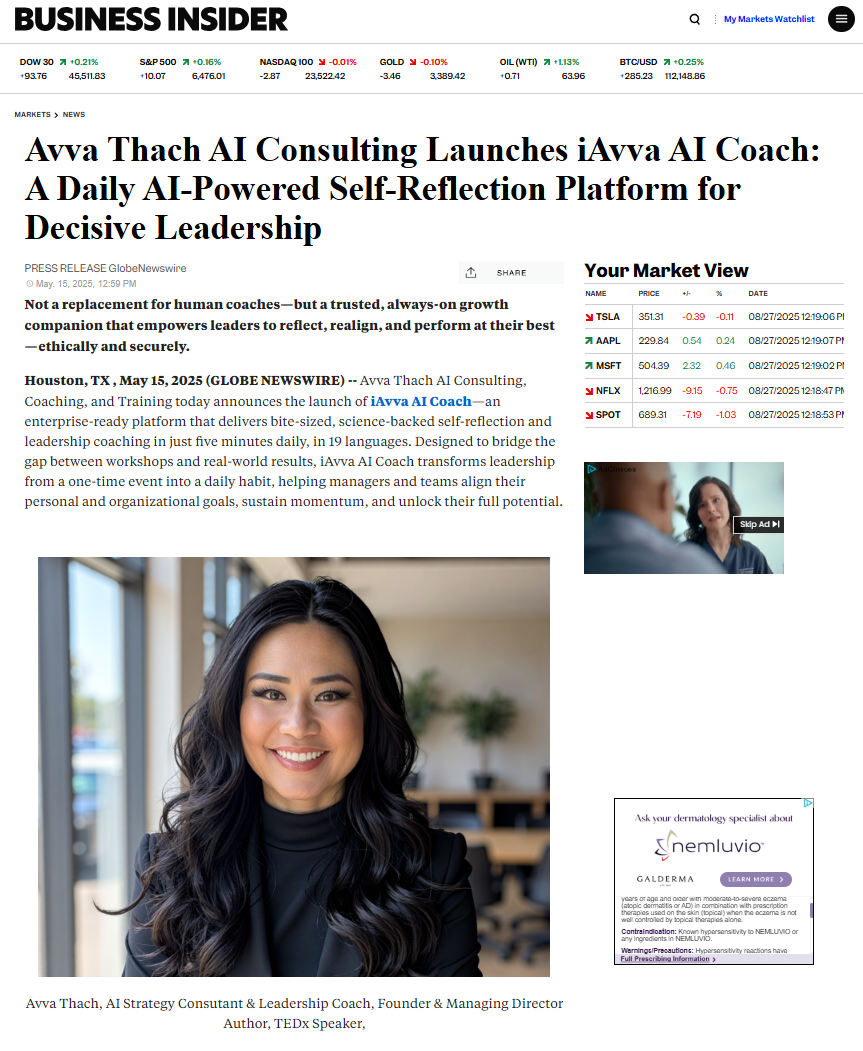Mastering Business Agility: Adapt and Thrive in a Dynamic Market
In today’s rapidly changing business landscape, mastering business agility is more crucial than ever. Companies that fail to adapt risk being left behind, while those that embrace agile practices can propel themselves to the forefront of innovation and success. This article will explore the key components of business agility and offer insights into how your organization can thrive in a dynamic market.
Understanding Business Agility
In today’s rapidly evolving marketplace, the term “business agility” has moved from being a corporate buzzword to a critical component of successful organizational strategy. But what exactly does business agility mean, and why is it indispensable?
Defining Business Agility
Business agility refers to an organization’s ability to adapt quickly to market changes—both internal and external. It encompasses agile business practices, flexible operations, and nimble strategies that enable companies to pivot when necessary. According to a study by McKinsey & Company, companies that embrace business agility report 30% higher employee satisfaction and operational performance (McKinsey & Company).
The Core Components of Business Agility
- Agile Leadership: Leaders set the tone for agility by fostering an environment of innovation and learning.
- Dynamic Capabilities: Cultivating skills and processes that allow the organization to respond adeptly to change.
- Cross-functional Collaboration: Breaking down silos to enhance team cooperation and accelerate decision-making.
- Customer-Centric Approaches: Prioritizing customer feedback in every strategic shift.
- Iterative Process Improvement: Continuously evaluating and refining processes for efficiency.
The modern business landscape demands more than just speed; it requires organizations to be resilient, adaptive, and forward-thinking. As Deloitte Insights notes, companies with strong agility capabilities are twice as likely to accomplish top-quartile financial performance compared with their peers (Deloitte Insights).
The Benefits of Embracing Agility
The benefits are not just theoretical; enterprises that adopt agile principles often see tangible improvements in operational efficiency and customer satisfaction. For instance, Spotify’s agile transformation enabled them to reduce their go-to-market time from six months to mere weeks.
“Being agile means focusing on the right things at the right time so we can deliver value faster.” – Henrik Kniberg, Agile Coach at Spotify
If you’re ready to dive deeper into how business agility can revitalize your organization, check out our article on making agile work for modern businesses here.
The Importance of Agile Leadership
In the rapidly changing landscape of today’s business world, agile leadership has emerged as a cornerstone for driving organizational success. Unlike traditional leadership models that often emphasize hierarchy and rigid processes, agile leadership encourages adaptability, collaboration, and a customer-centric approach. But what exactly makes agile leadership so vital?
Shaping a Flexible Organizational Culture
Agile leaders foster a culture that thrives on adaptability and flexibility. By encouraging open communication and embracing change, they empower teams to innovate without fear of failure. This cultural shift not only enhances employee morale but also drives continuous improvement across the organization.
- Empowerment: Agile leaders decentralize decision-making, allowing team members to take ownership of their tasks. This empowerment leads to faster responses and more effective solutions.
- Collaboration: Agile leaders break down silos by promoting cross-functional teamwork, which enhances innovation and agility.
- Customer Focus: A key aspect is aligning every effort towards delivering value to the customer, which ensures that the organization remains competitive.
Navigating Uncertainty with Confidence
The ability to navigate uncertainty is perhaps one of the most significant advantages of agile leadership. According to a study by McKinsey & Company, organizations with agile leaders are 1.5 times more likely to outperform their peers in times of market volatility.
“Agile businesses are built for both speed and stability.”—McKinsey & Company
An example of this is how agile leaders in the tech industry rapidly pivoted during the COVID-19 pandemic. By quickly adapting their strategies, these companies were able to sustain operations and even gain market share while others struggled.
Pioneering Innovative Solutions
A critical component of agile leadership is its role in fostering innovation. Agile leaders create an environment where experimentation is encouraged, enabling businesses to stay ahead of industry trends. The Harvard Business Review highlights that companies prioritizing agile practices gain a 60% improvement in innovation effectiveness.
If you’re interested in discovering how adopting agile leadership can elevate your business strategy, explore our article on transforming your leadership approach with executive coaching.
The bottom line? In an era where change is the only constant, businesses need leaders who are not just managers but visionaries capable of steering their organizations through unpredictable waters confidently and creatively.
Implementing an Agile Business Model
In today’s hyper-competitive market, implementing an agile business model is not merely a strategic choice—it’s a necessity. Whether you’re a nimble startup or an established enterprise, adopting agile principles can propel your organization to new heights of efficiency and innovation.
Understanding the Core of Agility
Agility in business isn’t just about doing things faster; it’s about doing them smarter. The agile business model revolves around flexibility, continuous improvement, and customer-centric approaches. It’s akin to upgrading from a flip phone to a smartphone—sure, both make calls, but one connects you to a world of possibilities at lightning speed!
- Iterative Process Improvement: By employing techniques like Lean and Six Sigma, organizations can continuously refine their processes. This iterative approach ensures that businesses remain adaptable and responsive to change.
- Cross-Functional Collaboration: Agile models thrive on collaboration. Teams from different departments work together seamlessly, breaking down silos and fostering innovation.
- Real-Time Data-Driven Decisions: Utilizing data analytics allows companies to make informed decisions swiftly. This reduces bottlenecks and enhances operational efficiency.
The Embrace of Agile Management
An agile management structure supports dynamic capabilities in business by allowing teams to pivot quickly in response to market demands. This kind of responsiveness isn’t just for superheroes—although we admit it sounds pretty heroic!
A report from the Agile Alliance suggests that agile businesses are 30% more productive than their traditional counterparts. By focusing on short development cycles, companies can deliver products that better meet customer needs while simultaneously minimizing waste.
Examples of Success
The tech giant Spotify is often cited as a paragon of agility in business strategy. By organizing its workforce into small, autonomous “squads,” Spotify has maintained its innovative edge while also keeping its organizational structure lean and flexible.
“It’s not the strongest of the species that survives, nor the most intelligent; it’s the one most adaptable to change.” – Charles Darwin
If you’re ready to transform your organization with an agile approach but don’t know where to start, explore our insights on how Fortune 100 companies leverage AI for competitive advantage (source). These insights offer valuable guidance on integrating agility into your own business model.
Building an Agile Organization Structure
In today’s fast-paced business world, the ability to pivot swiftly and efficiently could be the difference between staying ahead of the curve or becoming obsolete. Creating an agile organization structure is no longer a luxury—it’s a necessity. But how do you transform your company into a nimble powerhouse without turning it into a chaotic free-for-all? Let’s break it down.
1. Flattening Hierarchies
Gone are the days when decision-making was reserved for executives in corner offices. An agile structure thrives on flattened hierarchies, where information flows freely, and decisions can be made quickly. This democratization of decision-making not only speeds up processes but also empowers employees at all levels to contribute to strategic goals.
“Agile organizations—of which there are very few examples in full bloom—are characterized by a dense network of empowered teams within a people-centered culture that operates in rapid learning and fast decision cycles.” — McKinsey & Company
2. Emphasizing Cross-Functional Teams
Diversifying skill sets within teams allows for holistic problem-solving approaches, creating synergies that drive innovation. Cross-functional teams break down silos, fostering collaboration across departments and bringing diverse perspectives together to tackle challenges head-on. For more insights on making agile work, consider our detailed guide on making agile work for modern businesses.
- Real-World Example: Spotify is renowned for its squad model, where small cross-functional teams own specific parts of the product and have full responsibility over their piece of the puzzle.
- Fact: According to Harvard Business Review, companies organized around networks of cross-functional teams increase their speed by up to five times compared with traditional hierarchies.
3. Cultivating an Agile Culture
An agile organization thrives on its culture as much as its structure. Encouraging a mindset focused on continuous improvement, where experimentation is embraced and failures are seen as learning opportunities, can significantly enhance agility. In fact, adaptability has been cited as one of the key drivers behind successful digital transformation efforts among leading enterprises.
If you’re interested in exploring how top-tier companies leverage such strategies with AI for competitive advantage, don’t miss our exclusive insights on how Fortune 100 companies are doing just that: Read More.
Laughter: The Secret Ingredient?
And hey, while we’re shaking things up organizationally, let’s not forget the power of humor! A bit of levity can go a long way in easing transitions and boosting team morale—because who said building agility couldn’t also be fun?
Harnessing Real-Time Data-Driven Decisions
In the world of business agility, making informed decisions faster than a caffeine-charged squirrel can dart across a busy street is paramount. Real-time data-driven decisions give organizations the edge they need to thrive in an ever-changing market landscape. Imagine having the ability to pivot your business strategy with the precision of a ballerina and the speed of a Formula 1 car. That’s what harnessing real-time data can do for your enterprise.
Why Real-Time Data Matters
Today’s businesses collect data at unprecedented rates, but it’s how you use this information that separates the leaders from the laggards. According to Gartner, organizations that leverage data effectively could see an increase in operating margins by up to 60%. The key lies not just in collecting data but in transforming it into actionable insights at lightning speed.
“Data is like crude oil—it’s valuable, but if unrefined it cannot really be used.” – Michael Palmer, Data Scientist, Gartner
- Enhanced Decision-Making: Real-time analytics allow for quick adjustments based on current market conditions and customer feedback.
- Agility in Business Strategy: With up-to-the-minute insights, you can make strategic pivots that align with evolving market demands.
- Customer-Centric Approaches: Instant access to customer data means your business can respond more effectively to consumer needs and preferences.
The Role of AI and Machine Learning
The integration of AI and machine learning into your business processes can turbocharge your real-time decision-making capabilities. According to a report from McKinsey, companies utilizing AI for decision-making saw improvements in efficiency by up to 20%. For more insights on leveraging AI for competitive advantage, check out our article on how Fortune 100 companies are paving the way: How Fortune 100 Companies Are Leveraging AI for Competitive Advantage.
Pitfalls To Avoid
No one wants to pour good coffee down the drain just because it wasn’t brewed correctly. Similarly, when harnessing real-time data, ensure you avoid common pitfalls such as:
- Siloed Data: Ensure cross-functional teams have access to relevant data streams through integrated platforms.
- Lack of Skilled Personnel: Equip your team with skills necessary for interpreting complex datasets by investing in training and development.
- No Clear Objectives: Establish clear objectives for what you aim to achieve with your real-time analytics initiatives.
If you’re interested in diving deeper into agile business practices and how they integrate with real-time decision-making frameworks, visit our blog page:
iavva.ai/blogpage
Cultivating Customer-Centric Agility Approaches
In an era where customer expectations are more dynamic than ever, businesses must pivot towards customer-centric agility approaches to thrive. Embracing flexibility in business operations is not just about keeping customers happy—it’s about ensuring survival in a rapidly changing market landscape.
Understanding the Customer’s Voice
First things first—listen to your customers. According to a study by PwC, one in three consumers will leave a brand they love after just one bad experience.[1] This statistic underscores the importance of integrating real-time feedback into your agile business practices to quickly adapt and respond to evolving needs.
The Agile Customer Feedback Loop
- Collect Feedback: Utilize multiple channels such as surveys, social media interactions, and direct customer communications. Tools like Net Promoter Score (NPS) can also offer valuable insights.
- Analyze and Adapt: Don’t just gather data—use it! Analyze feedback for trends and actionable insights that guide your strategic adjustments.
- Implement Changes: Ensure you have agile processes in place that allow for quick implementation of necessary changes. This could mean tweaking a product feature or reimagining a service process.
A Case Study: Adaptive Enterprise Solutions at Work
A prime example of successful customer-centric agility is Amazon’s approach to continuous improvement. By leveraging real-time customer data and feedback, Amazon has streamlined its supply chain management, enhancing both speed and efficiency.[2]
“The path to sustained competitive advantage is paved with the bricks of customer satisfaction.” – Forbes[3]
This principle indicates that organizations focusing on customer-centric business agility not only enhance their dynamic capabilities but also position themselves as leaders in their respective industries. Remember, it’s not just about being quick; it’s about being nimble while keeping the customer’s needs front and center.
Cultivating these approaches might sound daunting, but with the right strategic agility for businesses, success is well within reach.
If you’re ready to integrate these strategies into your business model, explore more on how AI can enhance your strategic agility by visiting our comprehensive guide on Fortune 100 companies leveraging AI for competitive advantage.
[1] Source: PwC – Global Consumer Insights Survey
[2] Source: Harvard Business Review – How Amazon Innovates
[3] Source: Forbes – The Impact of Customer Satisfaction on Business Success
Achieving Continuous Improvement with Iterative Processes
In the rapidly evolving world of business, staying stagnant is akin to stepping on a treadmill—lots of effort, zero progress. To truly master business agility, embracing iterative processes for continuous improvement is not just a choice; it’s an imperative.
The Spiraling Power of Iteration
Think of iterative processes as your company’s secret sauce—constantly stirred, never settled, always tasting better. By breaking down large projects into smaller, more manageable chunks, organizations can refine and improve continuously. This approach allows teams to adapt based on real-time feedback and emerging market trends.
“Continuous improvement is better than delayed perfection.” — Mark Twain
Incorporating customer feedback early and often ensures that products and services are being fine-tuned according to actual needs rather than assumptions. According to a report by McKinsey & Company, companies that employ a systematic approach to continuous improvement see a 20-30% increase in operational efficiency (Source).
- Real-Time Adjustments: Use data analytics to drive decision-making in real-time, allowing for swift course corrections.
- Feedback Loop Integration: Establish effective feedback loops with stakeholders to enhance product development cycles.
- Agile Frameworks: Adopt agile methodologies such as Scrum or Kanban for structured yet flexible project management (Learn more in our newsletter).
Pioneering Businesses Leading the Way
Organizations like Spotify and Netflix have redefined their respective industries by leveraging iterative processes. Spotify’s “Squads” work autonomously but collaboratively across projects, continuously iterating based on user feedback—a prime example of how agility can transform corporate culture and output quality (Explore how Fortune 100 companies use AI for competitive advantage).
The mantra is simple: Test, learn, adjust—repeat. It’s like baking cookies: you test the recipe, taste it (yum!), tweak it if needed, then bake even better cookies next time.
The Road Ahead
Your journey towards achieving business agility with continuous improvements is not a sprint but a marathon. Start small, think big, scale fast—just remember the tortoise might be wise but don’t forget to sprinkle some hare-like speed when necessary!
If you’re ready to embark on this transformative path or just want someone to bounce ideas off (we love talking about cookies too), feel free to reach out anytime through our contact page at Avva Thach Consulting—a little chat could go a long way in shaping your business’s future (Contact Us).
In conclusion, mastering business agility requires a commitment to adapting swiftly and strategically within a dynamic market. By embracing an agile corporate culture, organizations can harness innovation, resilience, and responsiveness as they navigate the complexities of modern commerce.










Leave a Reply